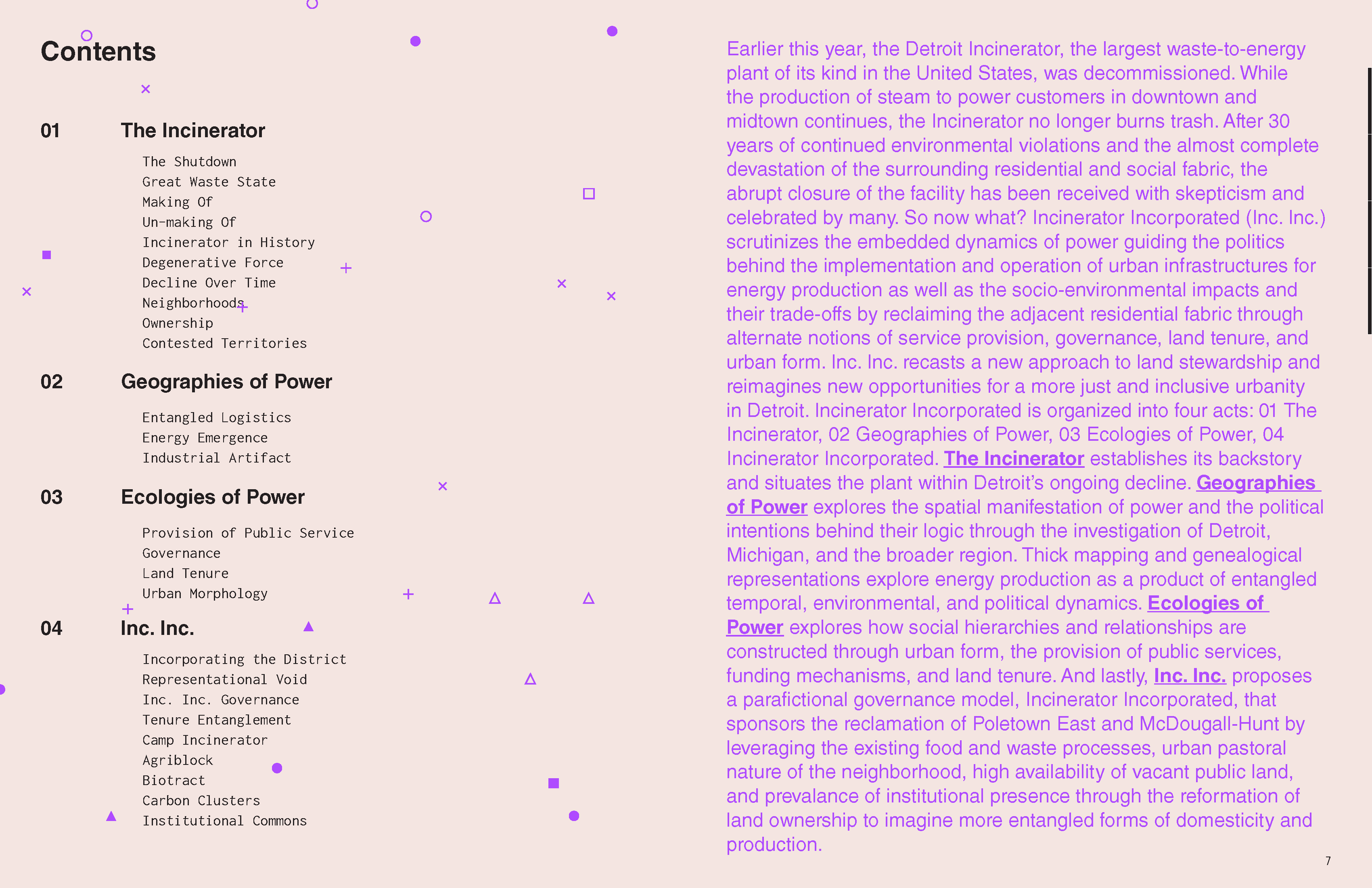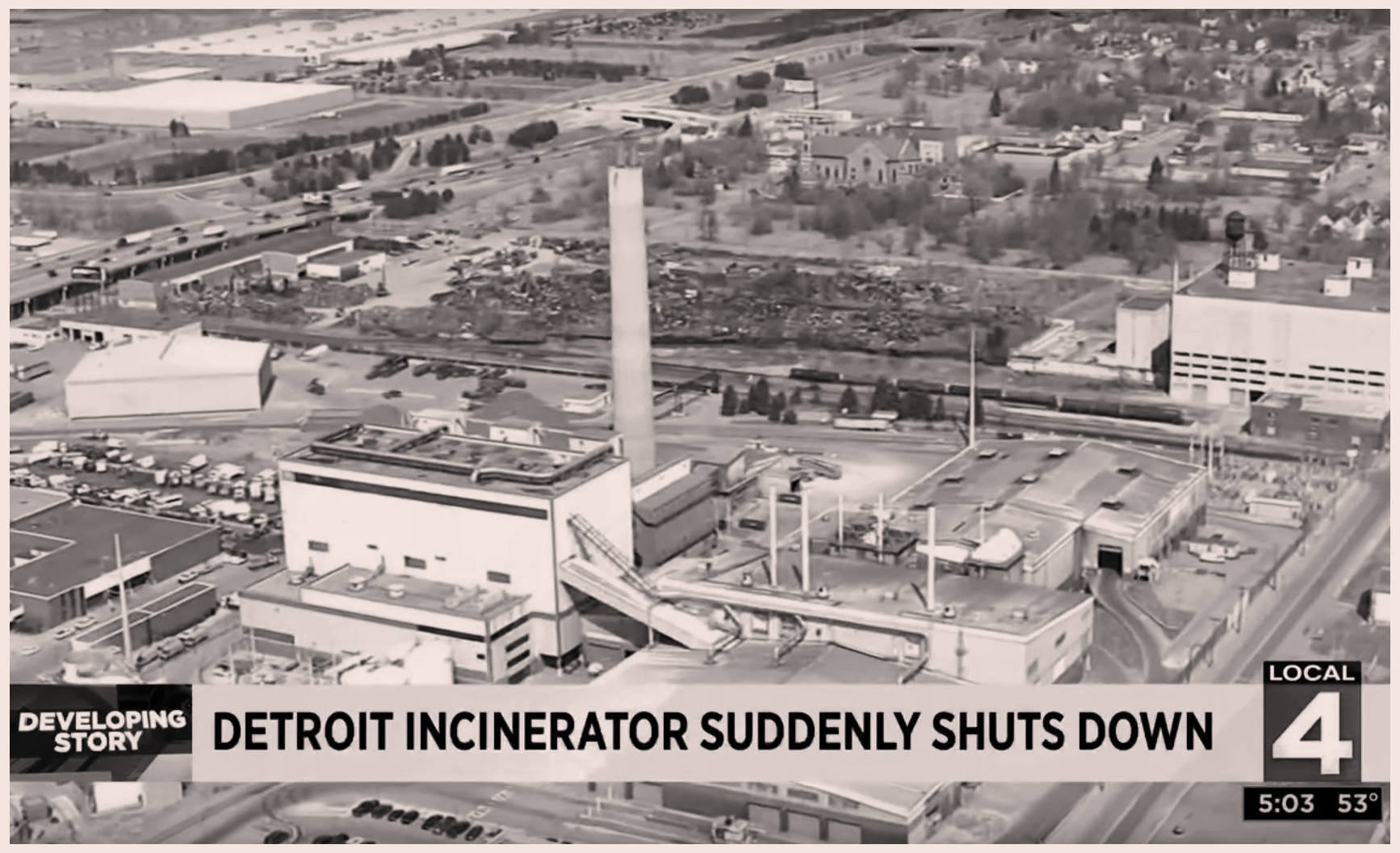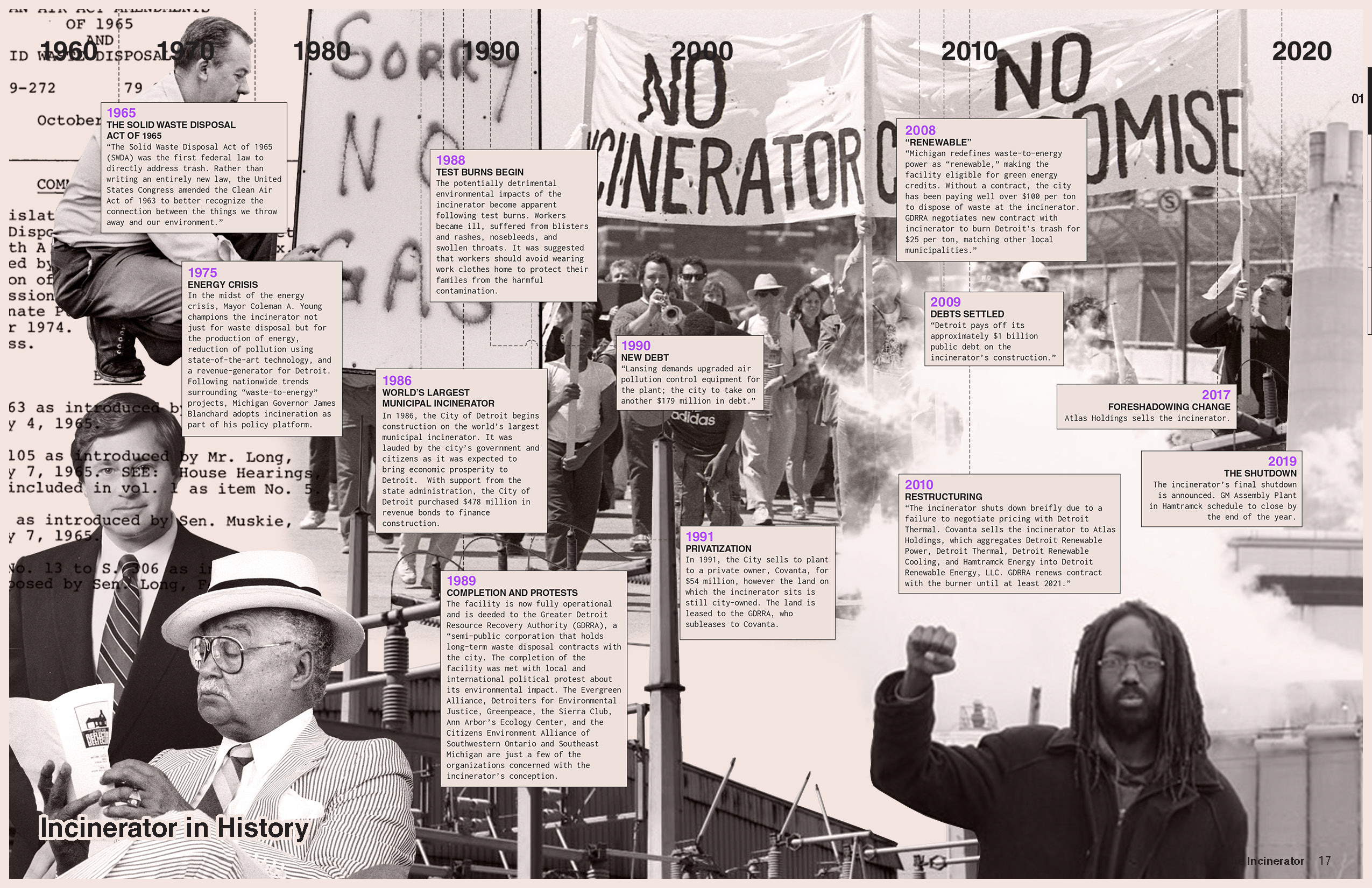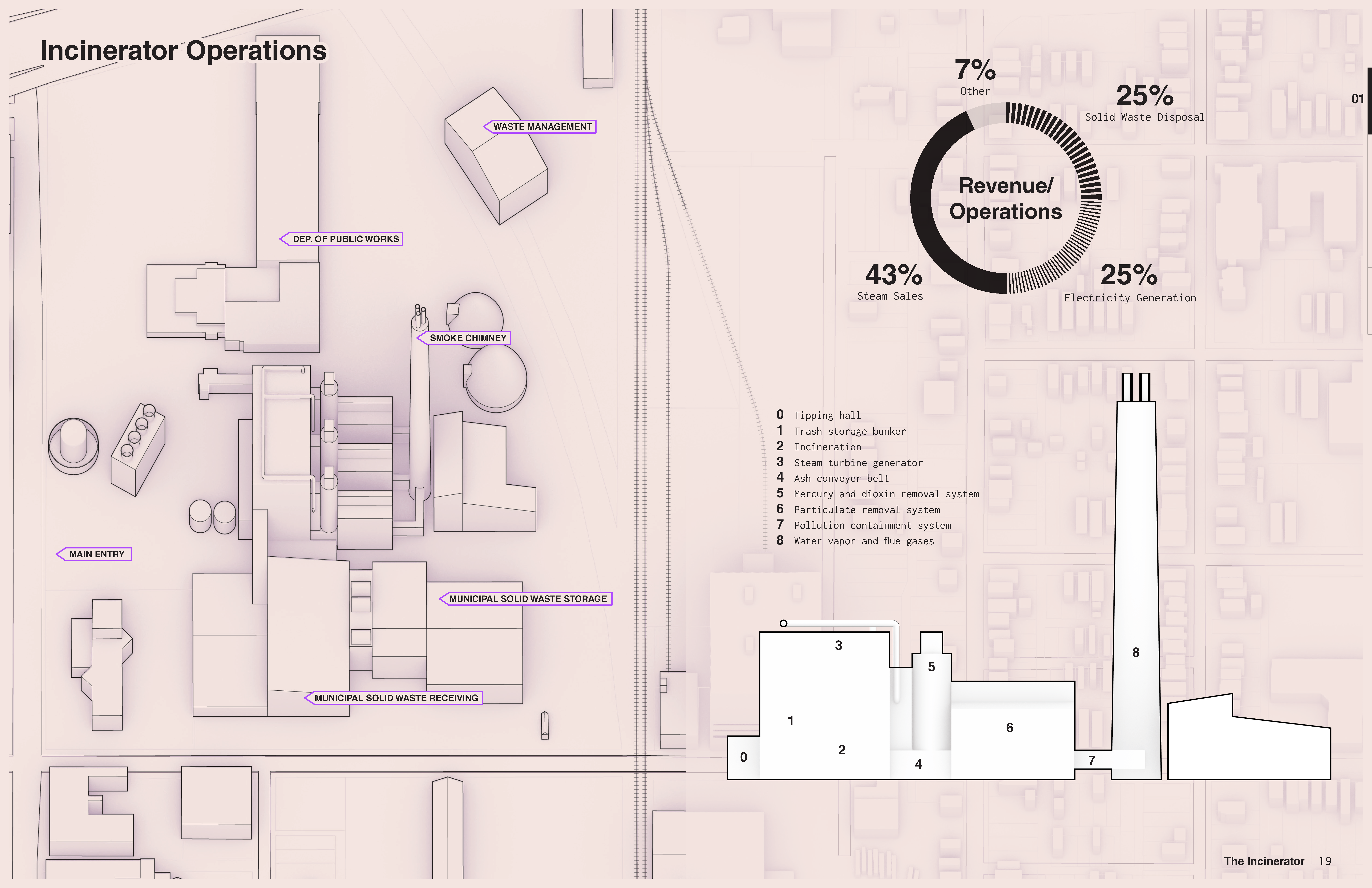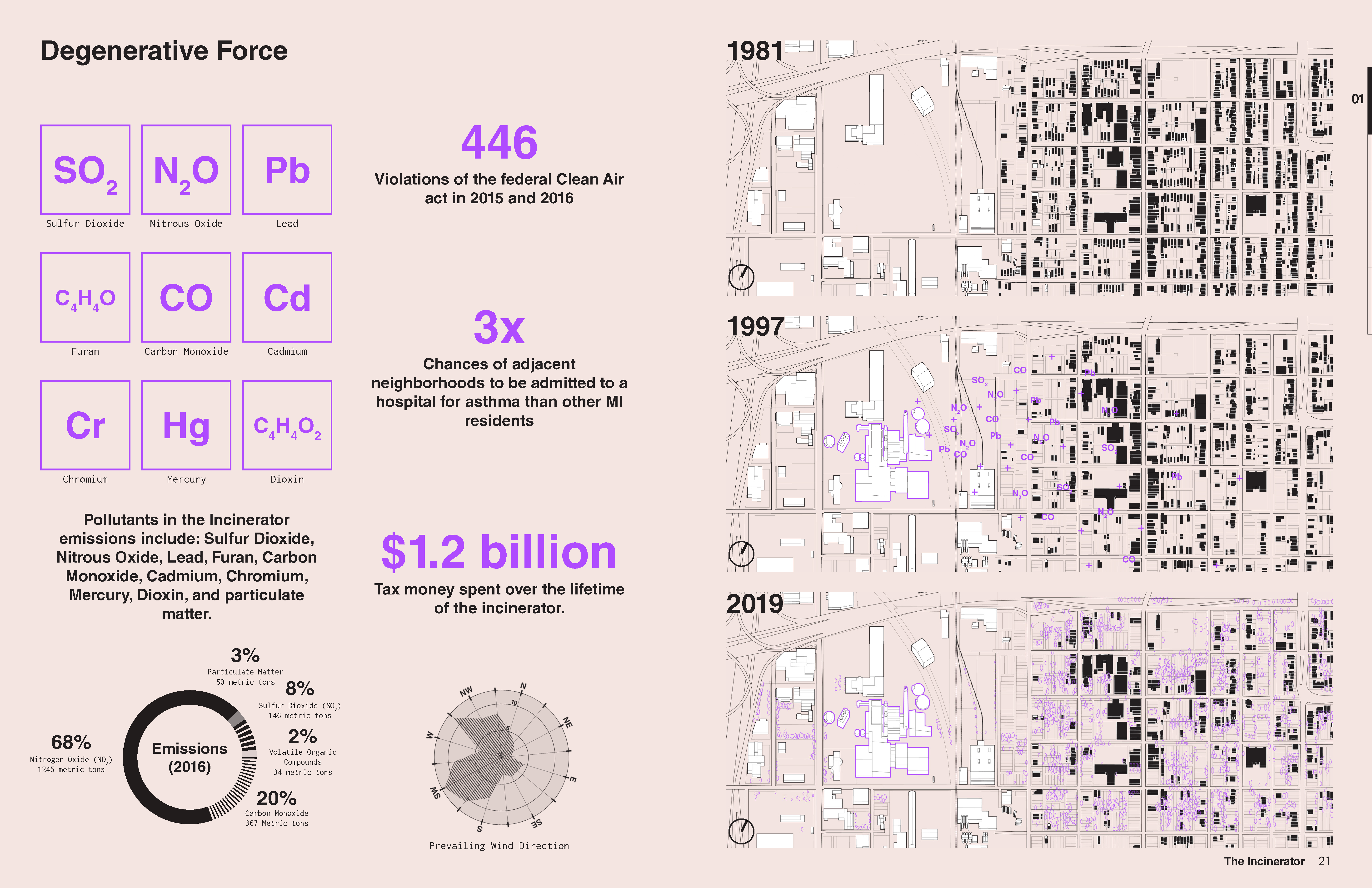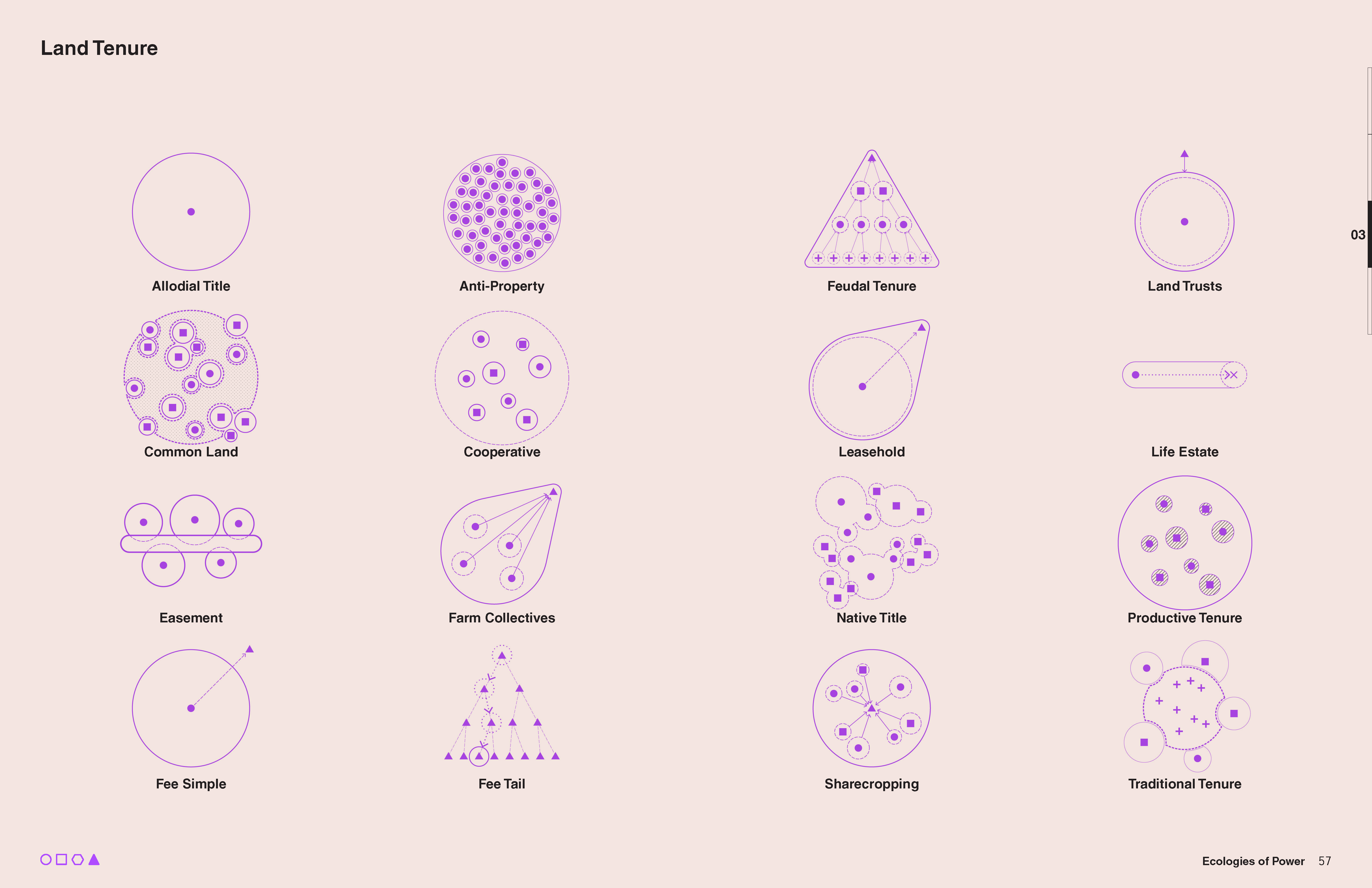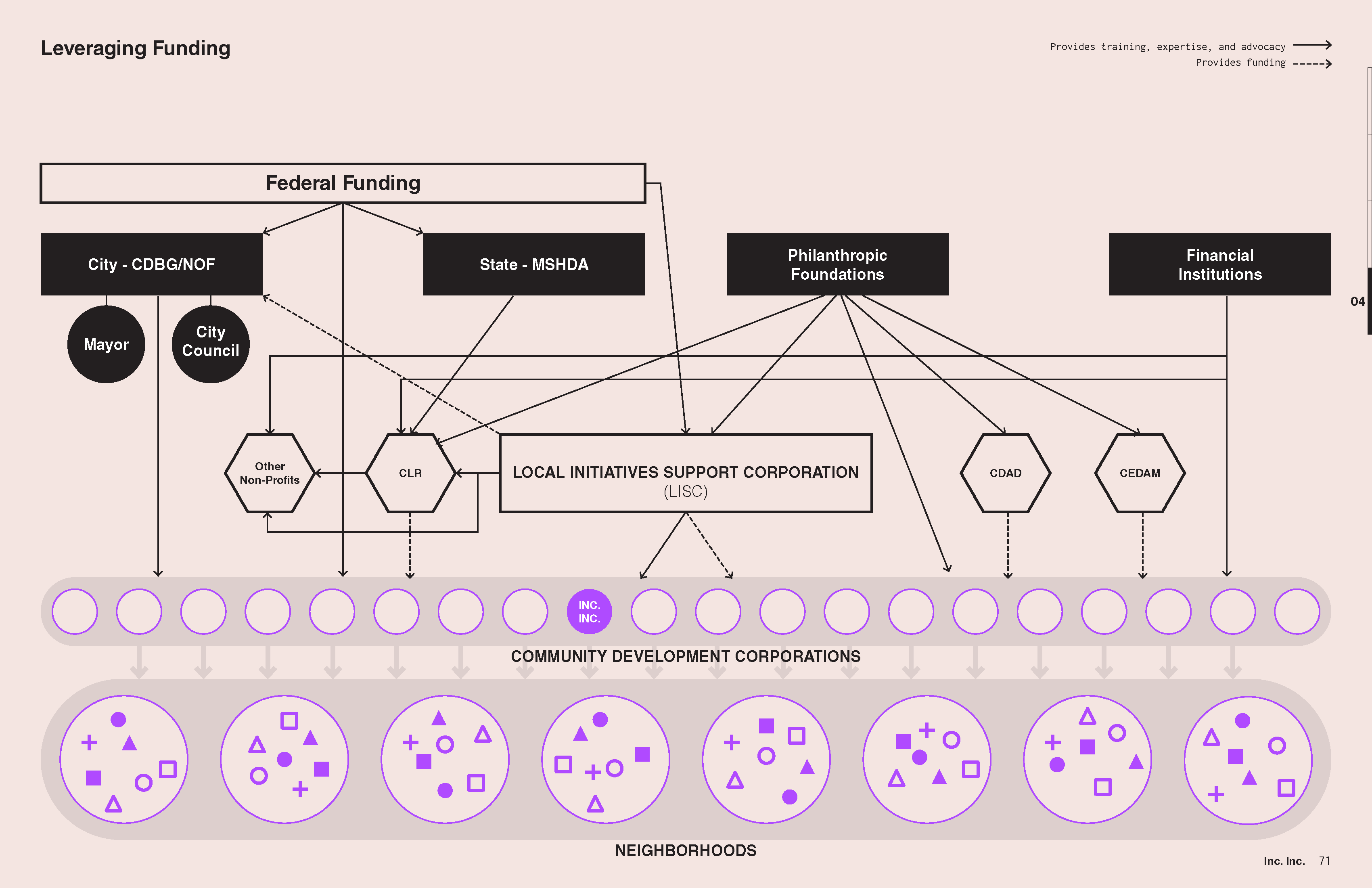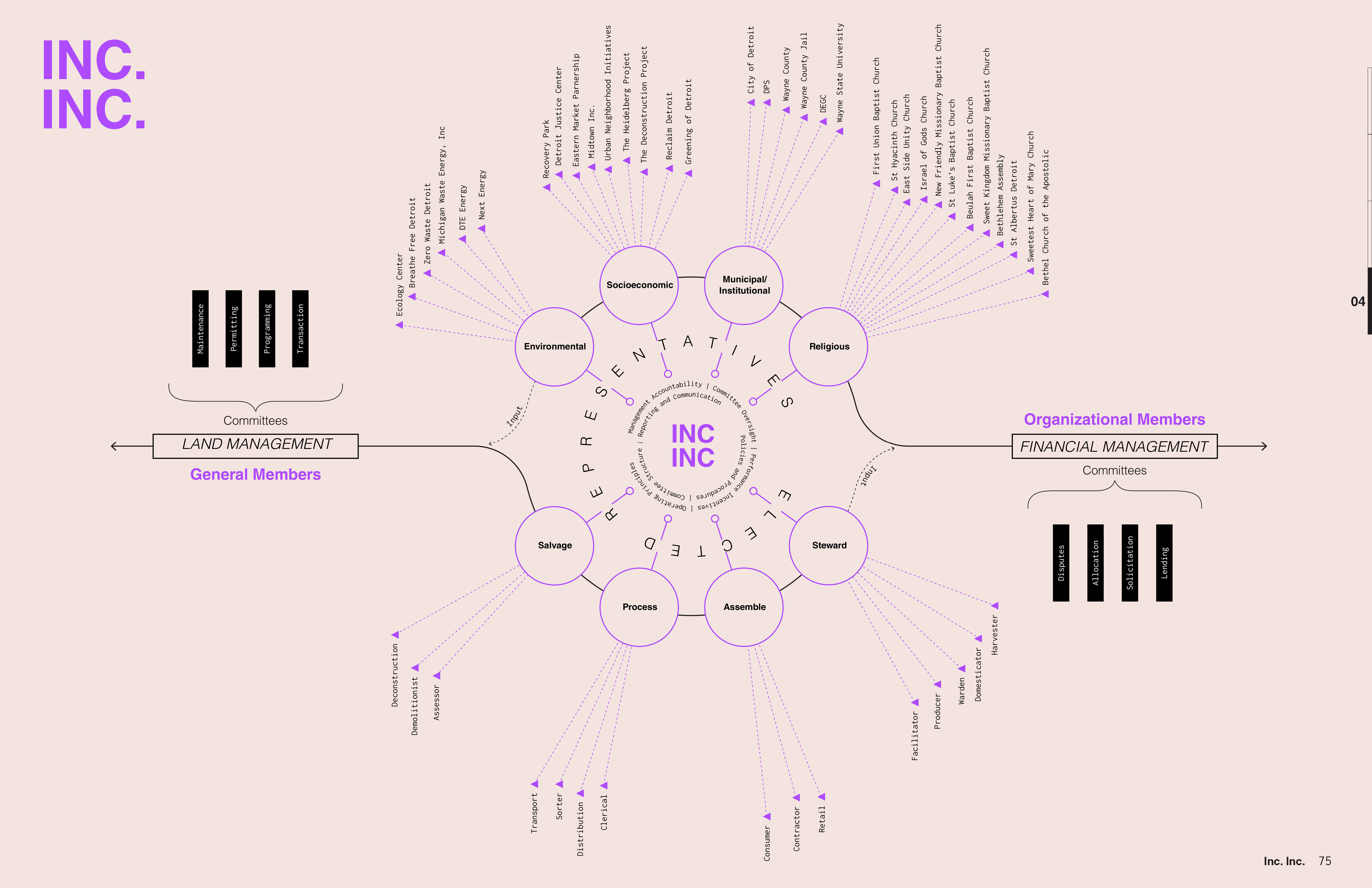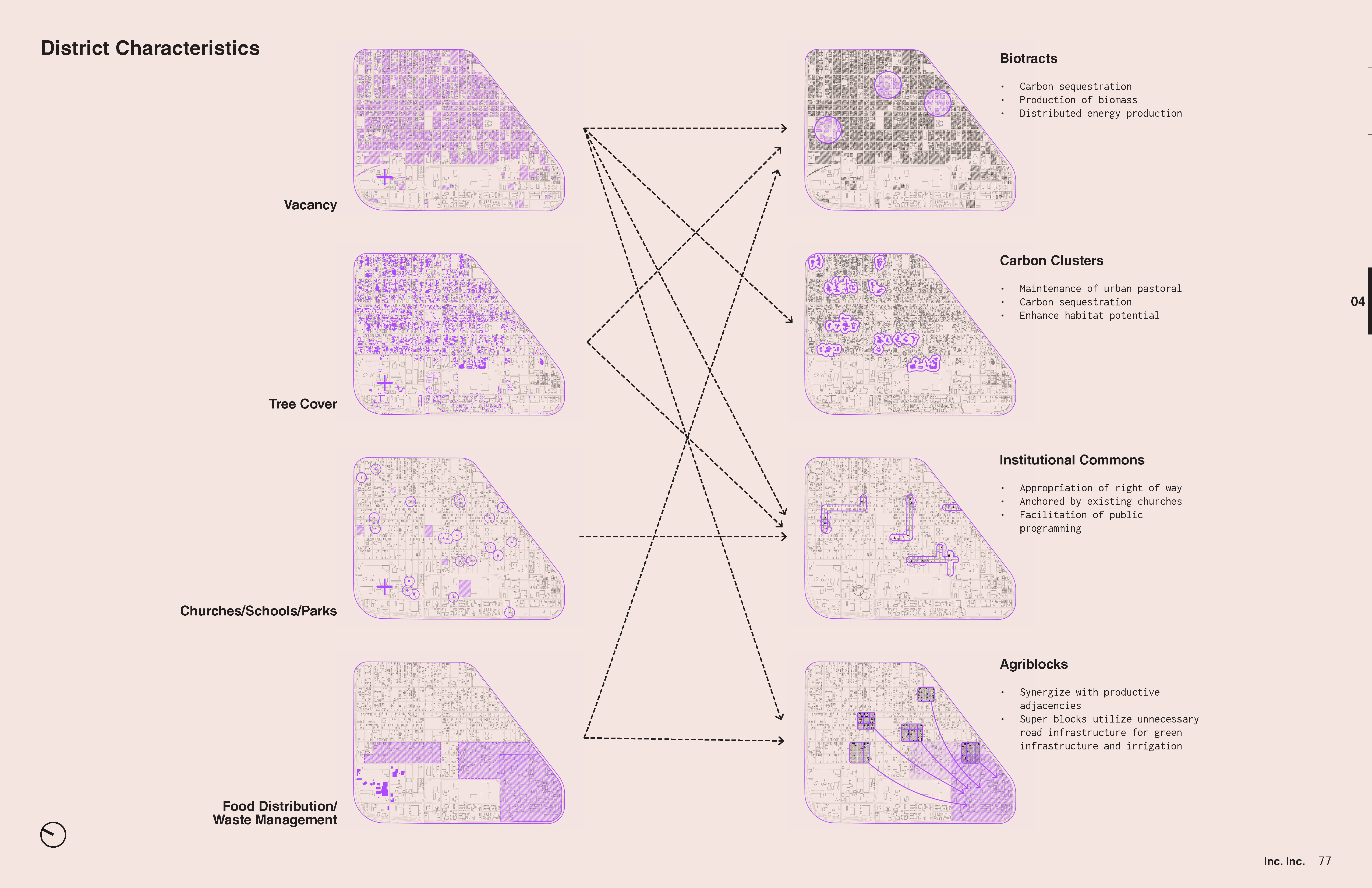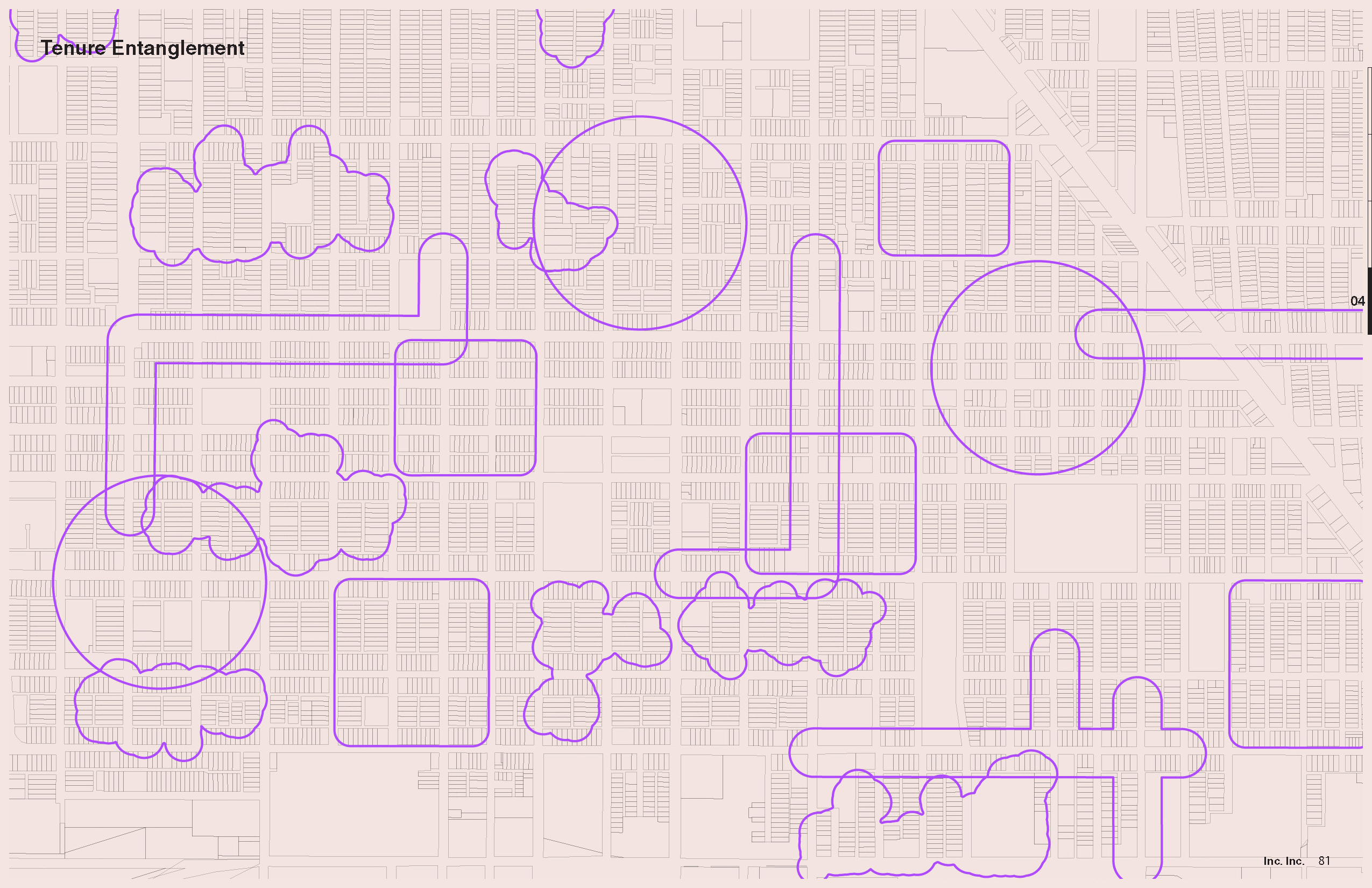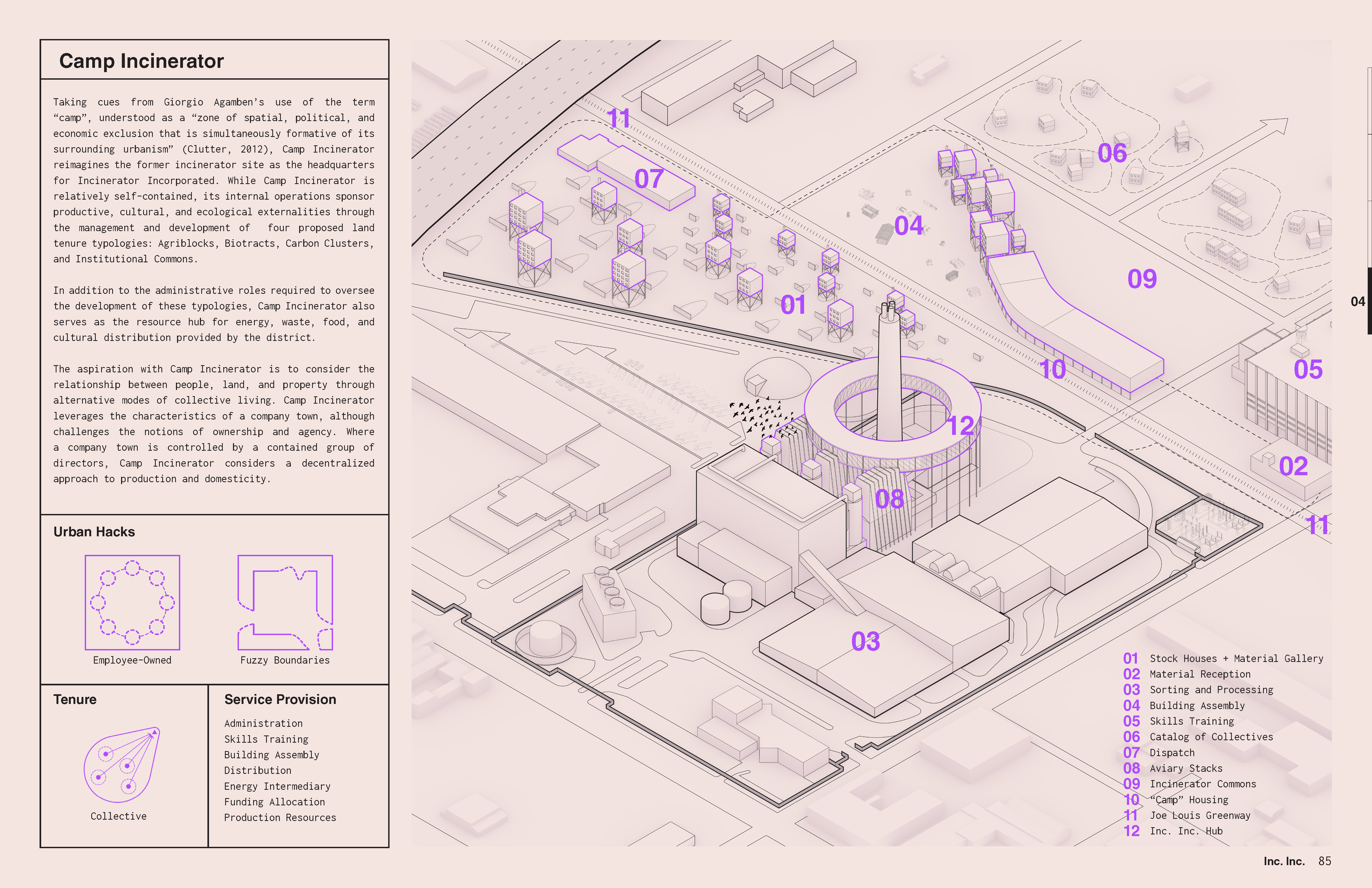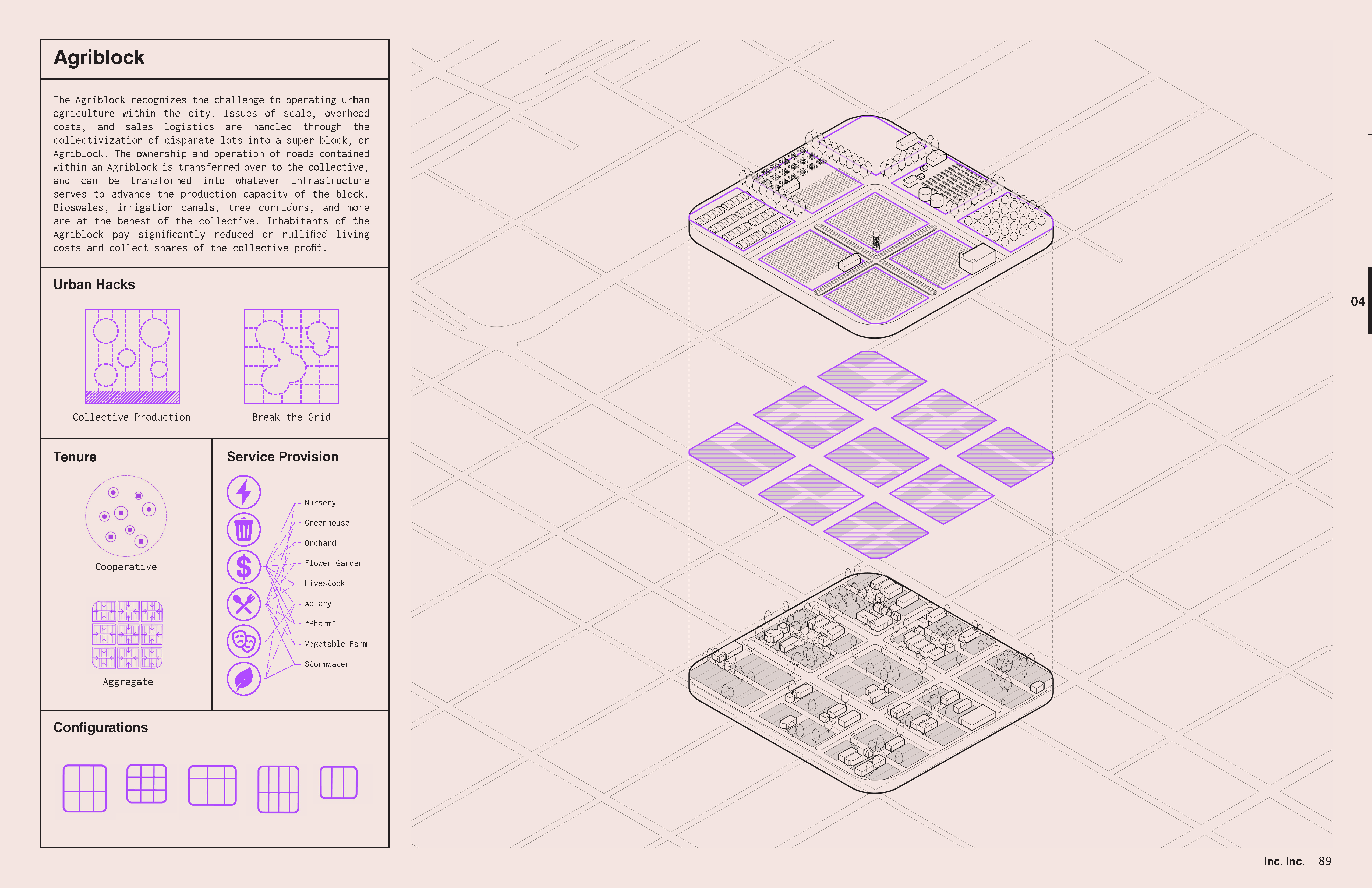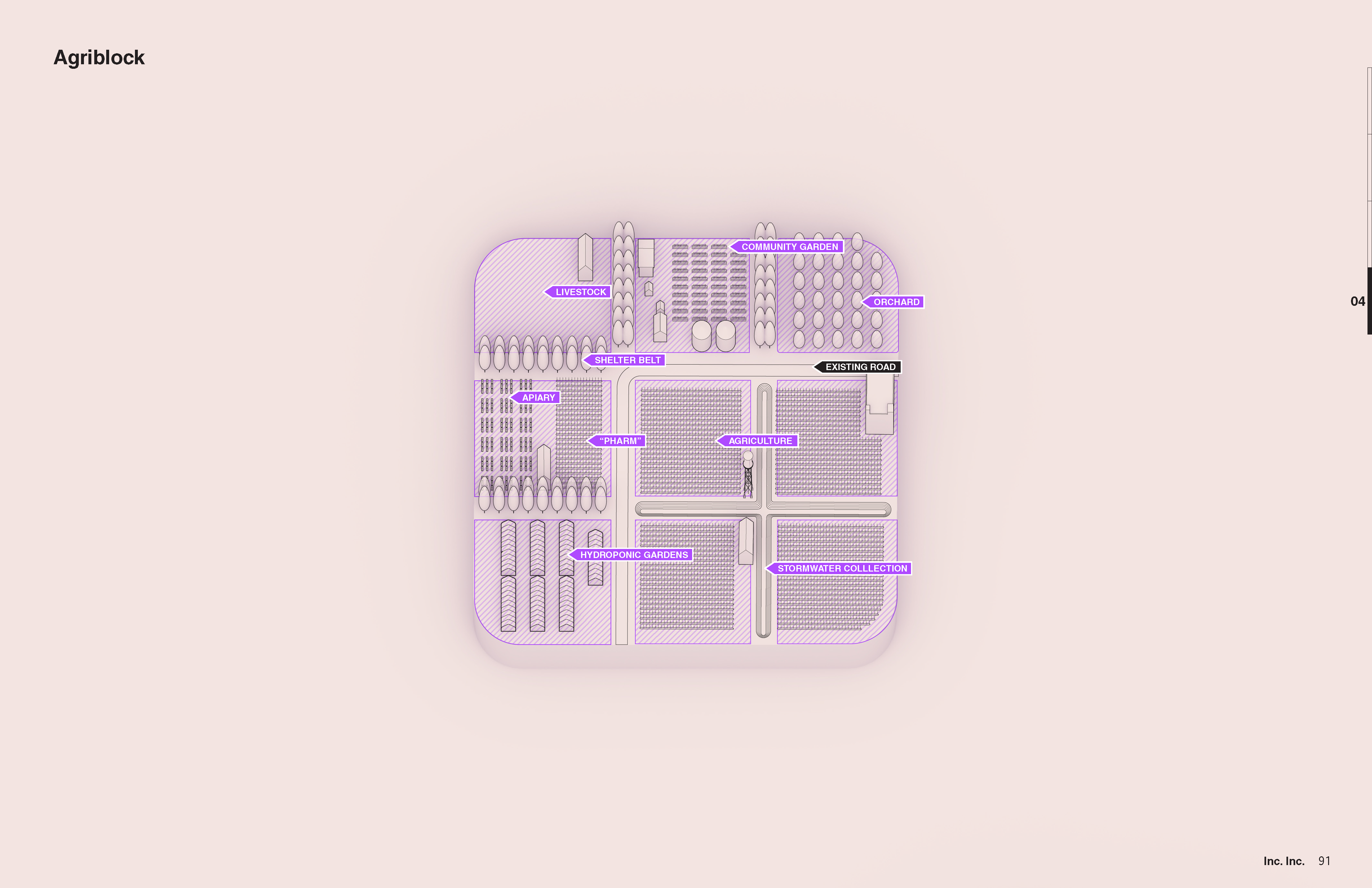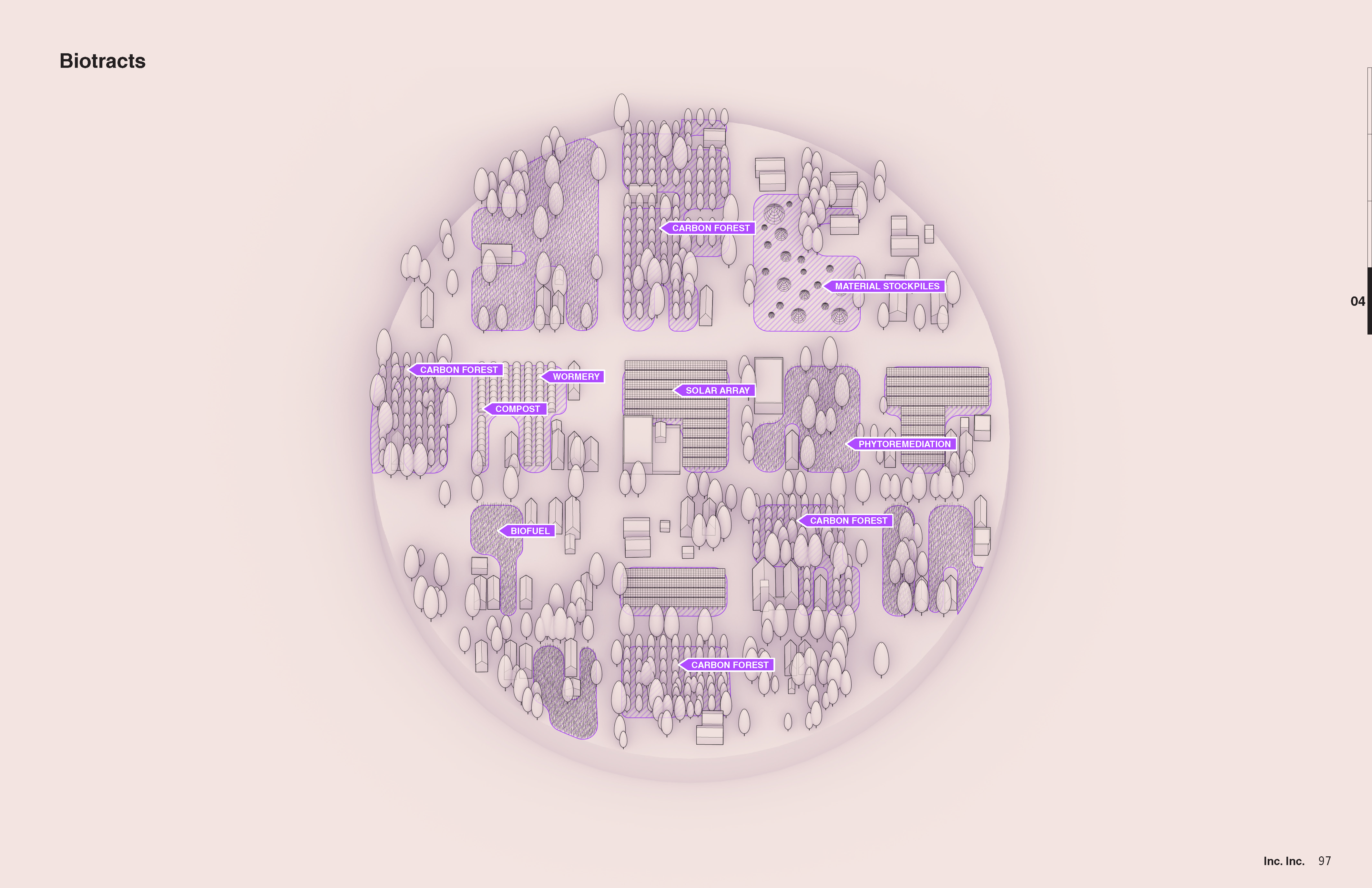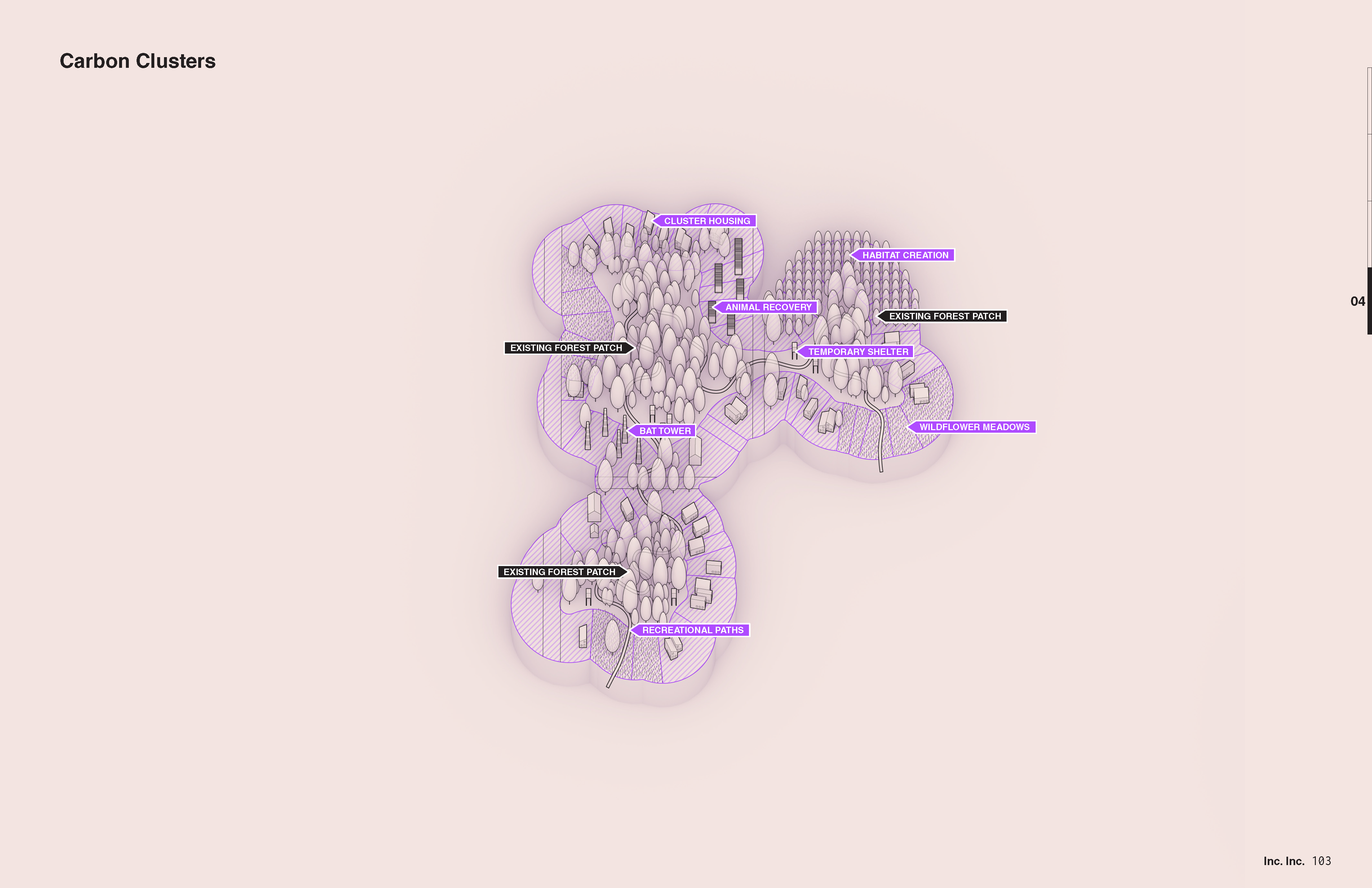Incinerator Incorporated
Fall 2019
Team: Salvador Lindquist
Earlier last year, the Detroit Incinerator, the largest waste-to-energy plant of its kind in the United States, was decommissioned, no longer burning trash. After 30 years of continued environmental violations and the almost complete devastation of the surrounding residential and social fabric, the abrupt closure of the facility has been received with skepticism and celebrated by many.
So how can the adjacent neighborhoods recover from decades of environmental injustice? Incinerator Incorporated (Inc. Inc.) scrutinizes the embedded dynamics of power guiding the politics behind the implementation and operation of urban infrastructures for energy production as well as the socio-environmental impacts and their trade-offs by reclaiming the adjacent residential fabric through alternate notions of service provision, governance, land tenure, and urban form. Inc. Inc. recasts a new approach to land stewardship and reimagines new opportunities for a more just and inclusive urbanity in Detroit.
The Incinerator, centrally located in Detroit, is part of a much larger waste and energy system. At the national scale, Michigan is often referred to as the Great Waste State, taking waste from Canada and various US states due to cheap landfilling prices and lax landfill regulations. At the regional scale, the incinerator takes waste from 10 different counties in Michigan, making a typically peripheral facility an infrastructural centerpoint for the Poletown East Historic neighborhood. Adjacent to what was a thriving Polish neighborhood, the Incinerator sits today in a heavy industry district, close to Eastern Market, Recovery Park, and endless fields of vacant land.
The location of the Incinerator capitalizes on its adjacency to I-94 and I-75 highways and the now decommissioned Dequindre Cut rail line. Freeway construction, urban renewal, industrialization, and segregational redlining, are among the contentious decisions that intentional planning efforts took to stage the decline of the Poletown neighborhood surrounding the Incinerator. The construction of the Incinerator was the coup de grace. Now, the City of Detroit suffers from an abundance of vacancy, brownfield sites, and blight.
The Incinerator was first presented by Mayor Coleman as a solution to the city’s decline, conceived as a way to address the national energy crisis, the ongoing waste problem, and the economic disparity in the city. This waste-to-energy plant shifted hands from the Greater Detroit Resource Recovery Authority (a semi-public corporation) to several different private owners over its lifetime. Although privately owned, the City of Detroit owns the land. With a cost over $1.2 billion in taxpayer money over its lifetime, the facility has countless environmental violations that were only excused to ensure the financial viability of the operation. Its opposition continued into today with organizations like Breathe Free Detroit and Zero Waste Detroit.
The burning of waste resulted in toxic emissions detrimental to the health of those in close proximity. For example, adjacent neighborhoods are 3 times more likely to be admitted to a hospital for asthma than other MI residents. This has resulted in the neighborhoods downwind of the Incinerator, Poletown East and McDougall-Hunt, to face significant decline over the last few decades.
Inc. Inc. proposes a parafictional governance model, Incinerator Incorporated, that sponsors the reclamation of the Poletown East and McDougall-Hunt neighborhoods by leveraging the existing food distribution and waste management infrastructure, urban pastoral nature of the neighborhood, high availability of vacant public land, and prevalence of institutional presence through the reformation of land ownership to imagine new models of territorialization, ownership, and community.

